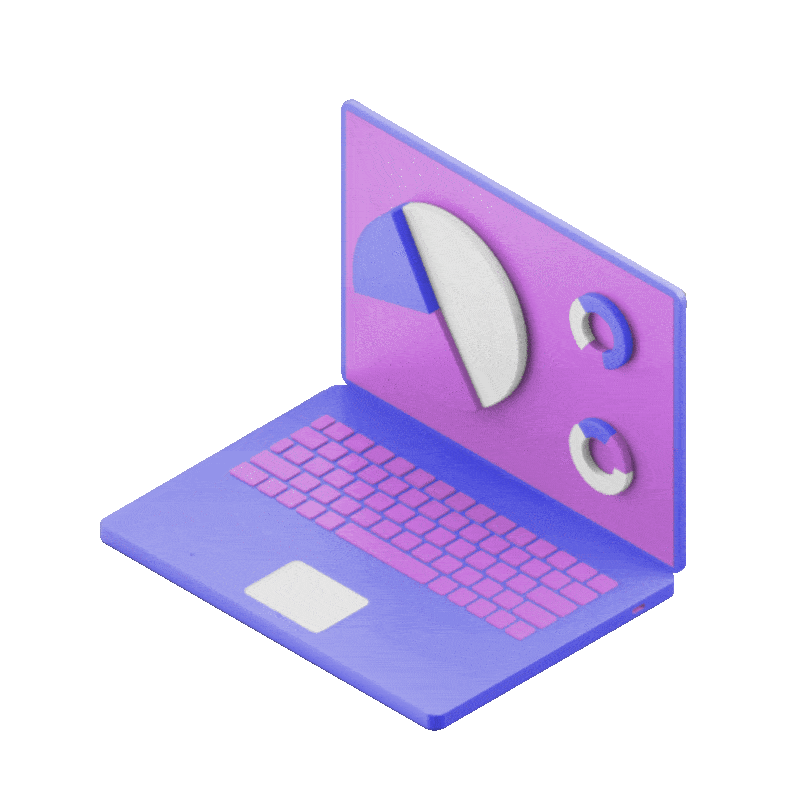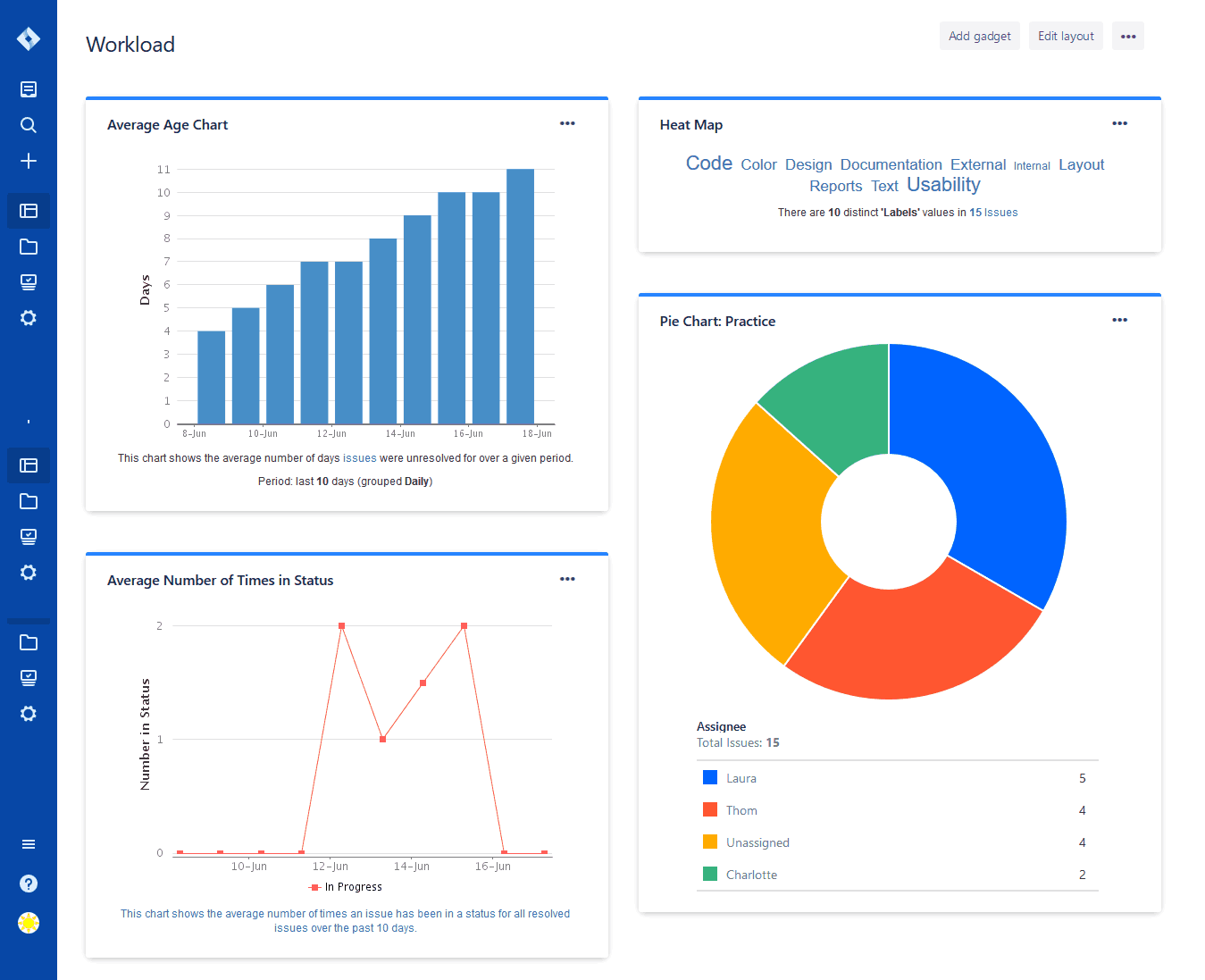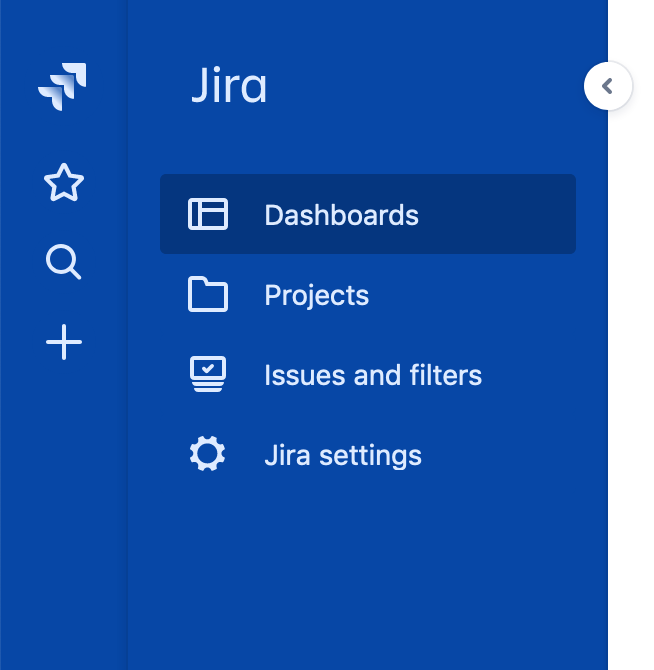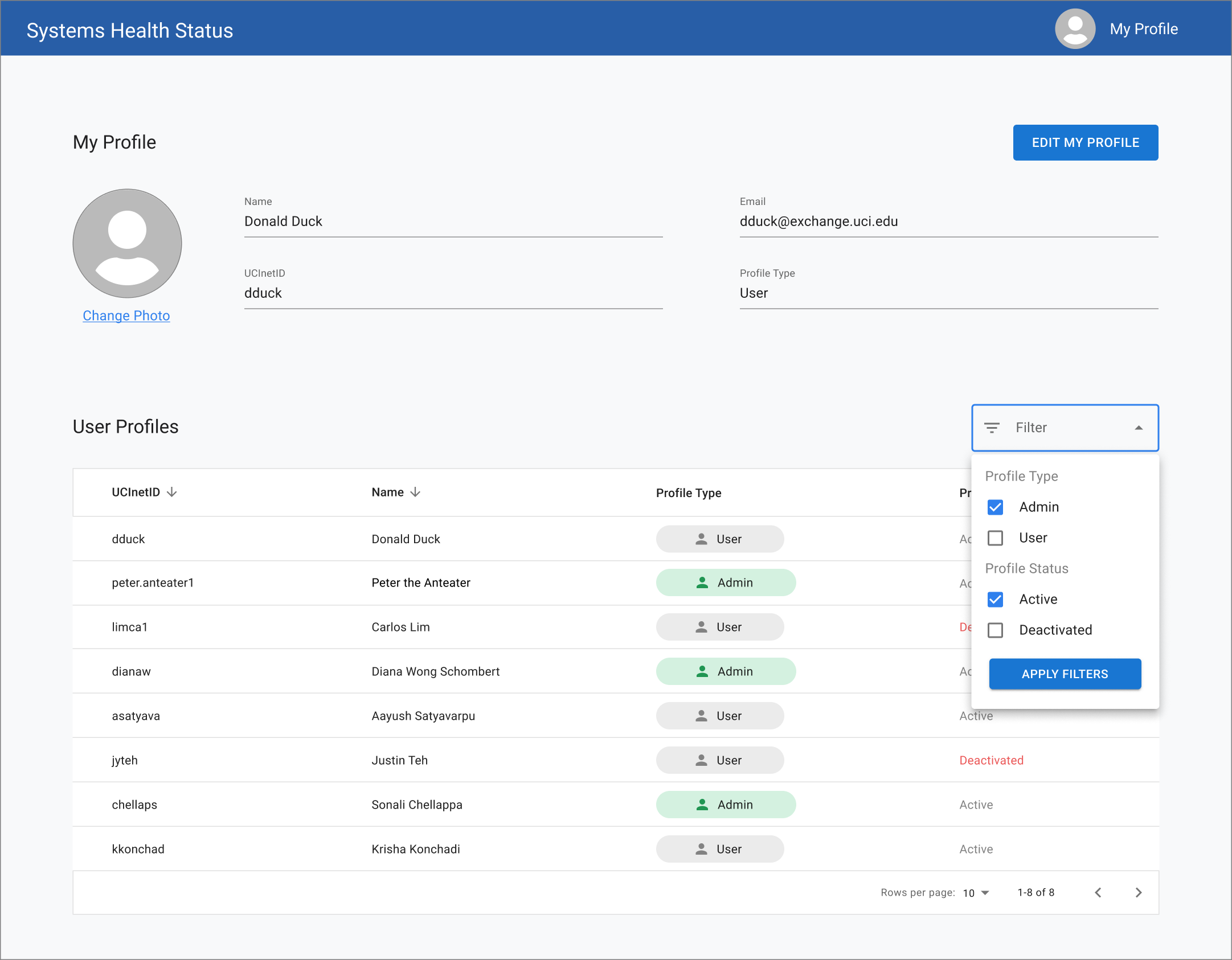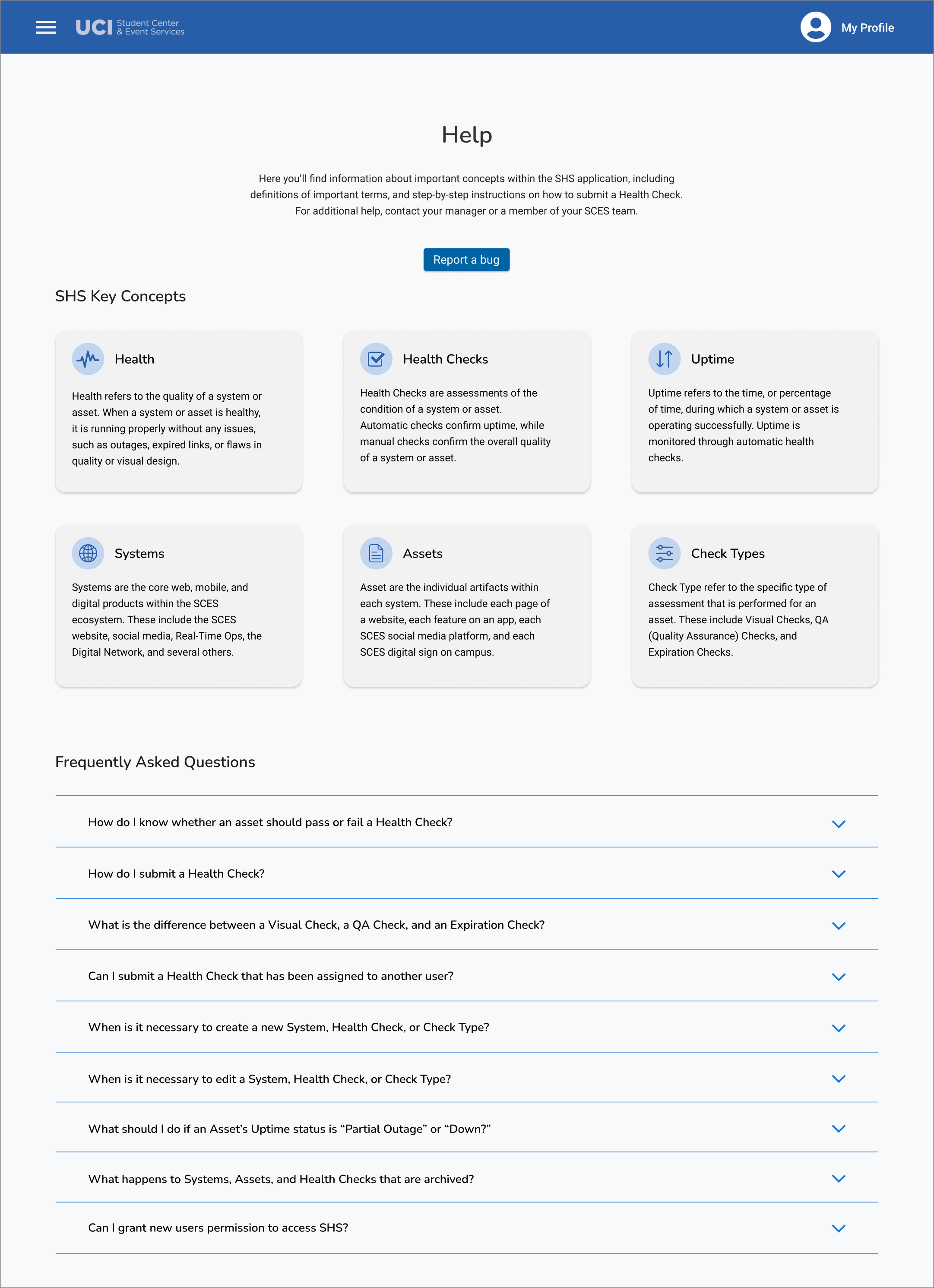System Health Status
Health check for software (WIP)
Project Brief
My co-worker wanted to prototype and design a Systems Health Check application that allows administrative staff and other users to update and track the status of critical customer-facing systems, including UCI Student Center & Event Services (SCES) digital products such as Real-Time Ops, UCI Now, social media platforms, and physical assets. The system will be used by the marketing team, development team, event tech team, and other employees at SCES. The goal of the application is to help users know the "health" of each system, assign and perform regular health checks, create records of issues, and view reports of each asset's health over time. The purpose of this application is to streamline the "health checking" of various assets and products, to more easily view the history of each asset's "health" over time, and to integrate the osTicket/MKIT ticket system into the health check process. This is still a work in progress!
Analyzing Users
Collaborating closely with my coworker, we embarked on creating a comprehensive persona for our manager. We identified that he desired a streamlined process to receive updates, track app bugs, and communicate with the team effectively. To cater to his needs, we designed a software solution that enabled him to create support tickets effortlessly, receive notifications for critical updates, and collaborate seamlessly with team members. Our meticulous approach and user-centered design resulted in a UX persona that shaped the foundation of a user-friendly and efficient system tailored to our manager's specific requirements.
“As a manager, I need to know that all our assets have been checked and what their status is at any given time.”
Competitive & Comparative Analysis
In our analysis for the Systems Health Check application, we conducted a comparative review with Atlassian Products, such as Jira and Confluence. This allowed us to assess heir approaches to user experience and potential integrations relevant to our project, focusing on tracking the health of customer-facing systems. Insights from this analysis informed our design decisions, ensuring alignment with industry standards and user expectations. As a work in progress, ongoing refinements will guarantee a robust solution for the various SCES teams.
Requirements Analysis
Drawing insights from similar applications in the market, we identified key features and functionalities that resonate with our target audience. By benchmarking against existing solutions, we gained valuable insights into industry best practices and potential areas for innovation. Our co-worker's vision for the application to streamline system health checks and integrate with the osTicket/MKIT ticket system guided our requirements analysis. We prioritized features such as real-time status updates, customizable health check templates, and robust reporting capabilities to meet the diverse needs of our users. By leveraging insights from competitive analysis and user research, we are poised to deliver a powerful solution that empowers our users to effectively monitor and maintain the health of critical customer-facing systems at SCES.
Initial Prototyping
Our team follows a collaborative design process that centers around Figma as our design tool. We start by creating initial designs in Figma, and then route them to team members for feedback. The feedback we receive covers various aspects, including design principles, usability considerations, and general suggestions. Armed with this valuable input, we iterate on the designs, creating a new version that incorporates the feedback we received. This iterative process allows us to refine and enhance the user experience continually. In comparing version 1 to version 2, the improvements are evident. We focused on enhancing the data visualization of assets, making them more informative and visually appealing. Additionally, we revamped the overall layout to improve usability, ensuring that users can easily navigate and interact with the app. This before-and-after transformation showcases how our iterative design approach and incorporation of user feedback resulted in a more refined and user-centric solution.
Future Plans
As we move forward with the System Health Status case study, our next focus is on creating a captivating landing page that communicates the app's purpose and functionality effectively. Additionally, we aim to establish brand consistency by designing a unique logo that reflects the app's identity and aligns with the overall user experience. Handing off our design work to the development team marks an exciting milestone, as we transition from concept to implementation. This process has been a valuable learning experience, allowing me to witness firsthand the process of starting from the bottom up. From conducting user research and crafting UX personas to defining metrics and designing intuitive interfaces, every step has deepened my understanding of the importance of user-centric design and collaboration with cross-functional teams. I am eager to see the project come to life and contribute to its success.
Designer
Developer


